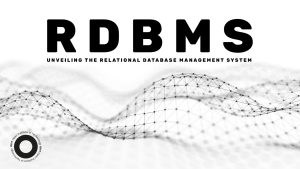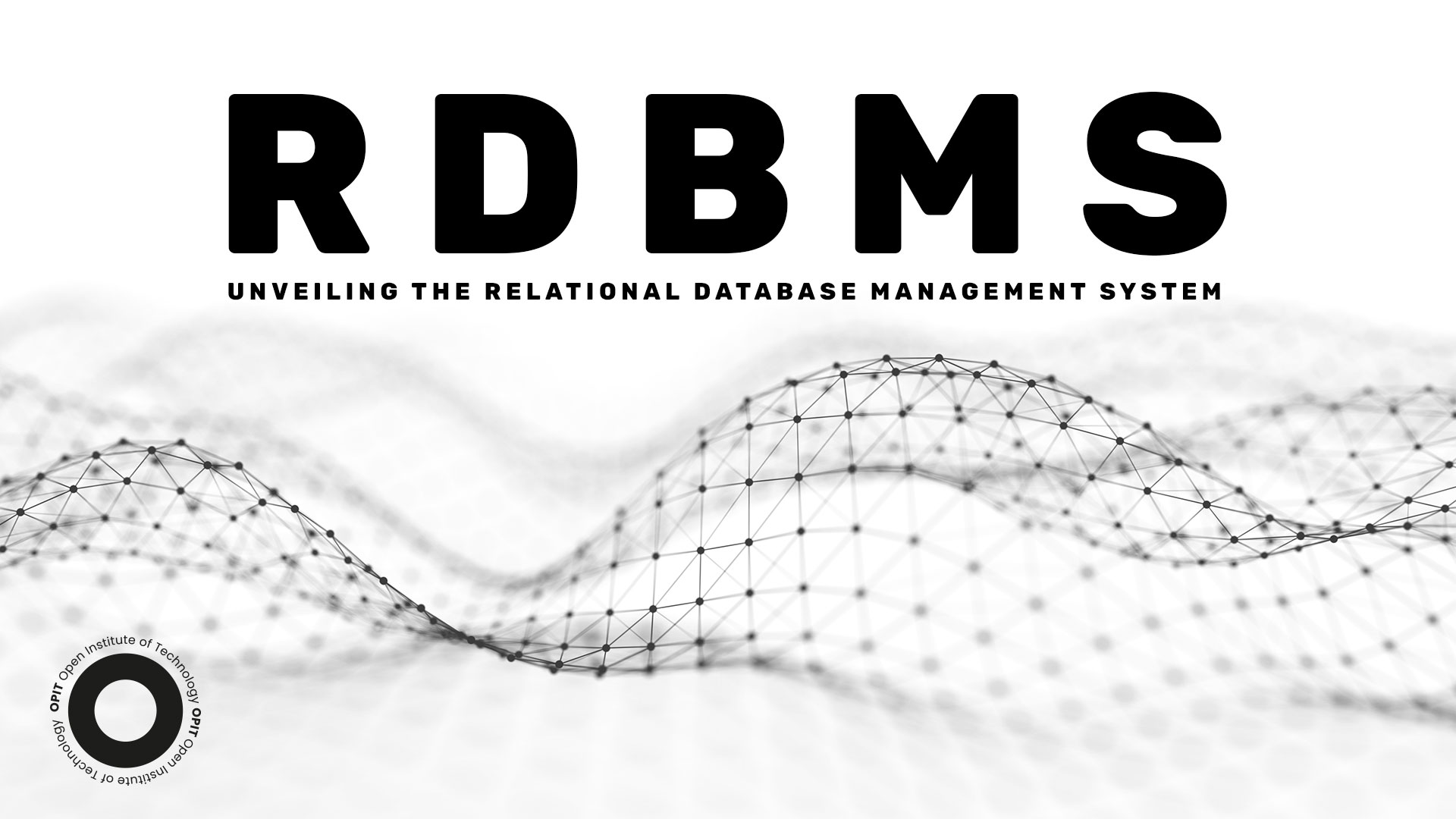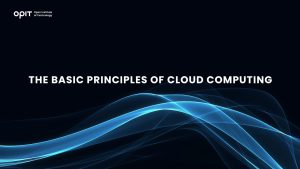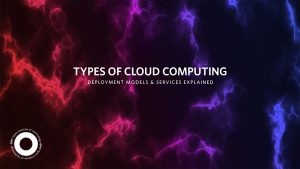

When you first get into modern computing, one of the terms that comes up most frequently is relational databases. These are clusters that are organized in such a way that they effortlessly find links between connected data points.
Relational databases are convenient, but what happens when you deal with vast amounts of information? You need something to act as your North Star, guiding you through the network and allowing you to stay on top of the data.
That something is an RDBMS. According to Google, RDBMS stands for a relational database management system – software that sets up and manages relational databases. In its full form, it’s been the light at the end of the tunnel for thousands of companies due to its accuracy, security, and ease of use.
The definition and importance of RDBMSs are the tip of the iceberg when it comes to these systems. This introduction to RDBMS will delve a bit deeper by taking a closer look at the concept of RDBMS, the history of this technology, use cases, and the most common examples.
History of RDBMS
The concept of RDBMS might be shrouded in mystery for some. Thus, several questions may come up when discussing the notion, including one as basic as “What is RDBMS?”
Knowing the RDBMS definition is a great starting point on your journey to understanding this concept. But let’s take a few steps back and delve into the history of this system.
Origins of the Relational Model
What if we told you that the RDBMS concepts are older than the internet? It may sound surprising, but it’s true.
The concept of RDBMS was developed by Edgar F. Codd 43 years ago. He aimed to propose a more efficient way to store information, a method that would consume drastically less memory than anything at the time. His model was groundbreaking, to say the least.
E.F. Codd’s Paper on Relational Model
Codd laid down his proposal in a 1970s paper called “A Relational Model of Data for Large Shared Data Banks.” He advocated a database solution comprised of intertwined tables. These tables enabled the user to keep their information compact, lowering the amount of disk space necessary for storage (which was scarce at the time).
The rest is history. The public welcomed Codd’s model with open arms since it optimized storage requirements and allowed people to answer practically any question using his principle.
Development of SQL
Codd’s research paved the way for relational database management systems, the most famous of which is SQL. This programming language was also developed in the ‘70s and was originally named SEQUEL (Structured English Query Language). It was quickly implemented across the computing industry and grew more powerful as the years went by.
Evolution of RDBMS Software
The evolution of RDBMS software has been fascinating.
Early RDBMS Software
The original RDBMS software was powerful, but it wasn’t a cure-all. It was a match made in heaven for users dealing with structured data, allowing them to organize it with minimal effort. However, pictures, music, and other forms of unstructured information were largely incompatible with this model.
Modern RDBMS Software
Today’s RDBMS solutions have come a long way from their humble beginnings. A modern relational DBMS can process different forms of information with ease. Programs like MySQL are versatile, adaptable, and easy to set up, helping database professionals spearhead the development of practically any application.
Key Concepts in RDBMS
Here’s another request you may have for an expert in RDBMS – explain the most significant relational database concepts. If that’s your question, your request has been granted. Coming up is an overview of RDBMS concepts that explain RDBMS in simple terms.
Tables and Relations
Tables and relations are the bread and butter of all relational database management systems. They sound straightforward, but they’re much different from, say, elements you come across in Microsoft Excel.
Definition of Tables
Tables are where data is stored in an RDBMS. They’re comprised of rows and columns for easier organization.
Definition of Relations
Relations are the links between tables. There can be several types of relations, such as one-to-one connections. This form means a data point from one table only matches one data point from another table.
Primary and Foreign Keys
No discussion about RDBMS solutions is complete without primary and foreign keys.
Definition of Primary Keys
A primary key is the unique element of each table that defines the table’s rows. The number of primary keys in a table is limited to one.
Definition of Foreign Keys
Foreign keys are used to form an inextricable bond between tables. They always refer to the primary key of another table.
Normalization
Much of database management is akin to separating wheat from the chaff. One of the processes that allow you to do so is normalization.
Purpose of Normalization
Normalization is about restoring (or creating) order in a database. It’s the procedure of eradicating unnecessary data for the purpose of cleaner tables and smoother management.
Normal Forms
Every action has its reaction. For example, the reaction of normalization is normal forms. These are forms of data that are free from redundant or duplicate information, making them easily accessible.
Popular RDBMS Software
This article has dissected basic relational database concepts, the RDBMS meaning, and RDBMS full form. To further shed light on the technology, take a look at the crème de la crème of RDBMS platforms.
Oracle Database
If you want to make headway in the database management industry, Oracle Database can be one of your best friends.
Overview of Oracle Database
Oracle Database is the most famous RDBMS around. The very database of this network is called Oracle, and the software comes in five different versions. Each rendition has a specific set of features and benefits, but some perks hold true for each one.
Key Features and Benefits
- Highly secure – Oracle employs top-grade security measures.
- Scalable – The system supports company growth with adaptable features.
- Available – You can tap into the architecture whenever necessary for seamless adjustments.
Microsoft SQL Server
Let’s see what another powerhouse – Microsoft SQL Server – brings to the table.
Overview of Microsoft SQL Server
Microsoft SQL Server is a reliable RDBMS with admirable capabilities. Like Oracle, it’s available in a range of editions to target different groups, including personal and enterprise users.
Key Features and Benefits
- Fast – Few systems rival the speed of Microsoft SQL Server.
- Versatile – The network supports on-premise and cloud applications.
- Affordable – You won’t burn a hole in your pocket if you buy the standard version.
MySQL
You can take your business to new heights with MySQL. The following section will explore what makes this RDBMS a go-to pick for Uber, Slack, and many other companies.
Overview of MySQL
MySQL is another robust RDBMS that enables fast data retrieval. It’s an open-source solution, making it less complex than some other platforms.
Key Features and Benefits
- Quick – Efficient memory use speeds up the MySQL environment.
- Secure – Bulletproof password systems safeguard against hacks.
- Scalable – You can use MySQL both for small and large data sets.
PostgreSQL
Last but not least, PostgreSQL is a worthy contender for the best RDBMS on the market.
Overview of PostgreSQL
If you need a long-running RDBMS, you can’t go wrong with PostgreSQL. It’s an open-source solution that’s received more than two decades’ worth of refinement.
Key Features and Benefits
- Nested transactions – These elements deliver higher concurrency control.
- Anti-hack environment – Advanced locking features keep cybercriminals at bay.
- Table inheritance – This feature makes the network more consistent.
RDBMS Use Cases
Now we get to what might be the crux of the RDBMS discussion: Where can you implement these convenient solutions?
Data Storage and Retrieval
- Storing large amounts of structured data – Use an RDBMS to keep practically unlimited structured data.
- Efficient data retrieval – Retrieve data in a split second with an RDBMS.
Data Analysis and Reporting
- Analyzing data for trends and patterns – Discover customer behavior trends with a robust RDBMS.
- Generating reports for decision-making – Facilitate smart decision-making with RDBMS-generated reports.
Application Development
- Backend for web and mobile applications – Develop a steady web and mobile backend architecture with your RDBMS.
- Integration with other software and services – Combine an RDBMS with other programs to elevate its functionality.
RDBMS vs. NoSQL Database
Many alternatives to RDBMS have sprung up, including NoSQL databases. But what makes these two systems different?
Overview of NoSQL Databases
A NoSQL database is the stark opposite of RDBMS solutions. It takes a non-relational approach, which is deemed more efficient by many.
Key Differences Between RDBMS and NoSQL Databases
- Data model – RDBMSs store structured data, whereas NoSQL databases store unstructured information.
- Scalability – NoSQL is more scalable because it doesn’t require a fixed schema (relation-based model).
- Consistency – RDBMSs achieve consistency through rules, while NoSQL models feature eventual consistency.
Choosing the Right Database for Your Needs
Keep these guidelines in mind when selecting your database platform:
- Use an RDBMS for centralized apps and NoSQL for decentralized solutions.
- Use an RDBMS for structured data and NoSQL for unstructured data.
- Use an RDBMS for moderate data activity and NoSQL for high data activity.
Exploring the Vast Utility of RDBMS
If you’re looking for a descriptive answer to the “what is relational database management system question,” here it is – it is the cornerstone of database management for countless enterprises. It’s ideal for structured data projects and gives the user the reins of data management. Plus, it’s as secure as it gets.
The future looks even more promising. Database professionals are expected to rely more on blockchain technology and cloud storage to elevate the efficacy of RDBMS.
Have questions?
Visit our FAQ page or get in touch with us!
Write us at +39 335 576 0263
Get in touch at hello@opit.com
Talk to one of our Study Advisors
We are international
We can speak in:




